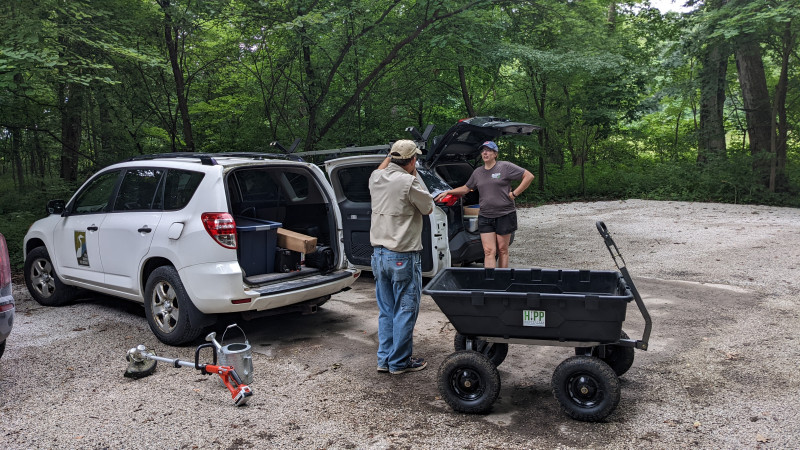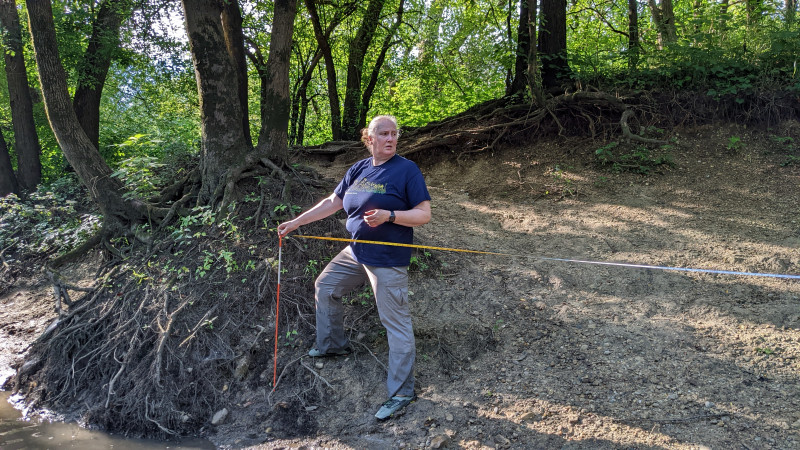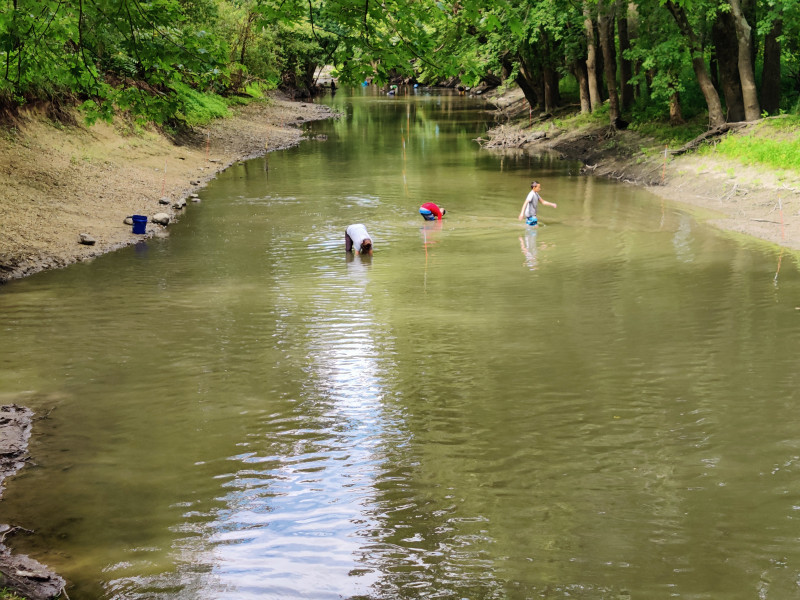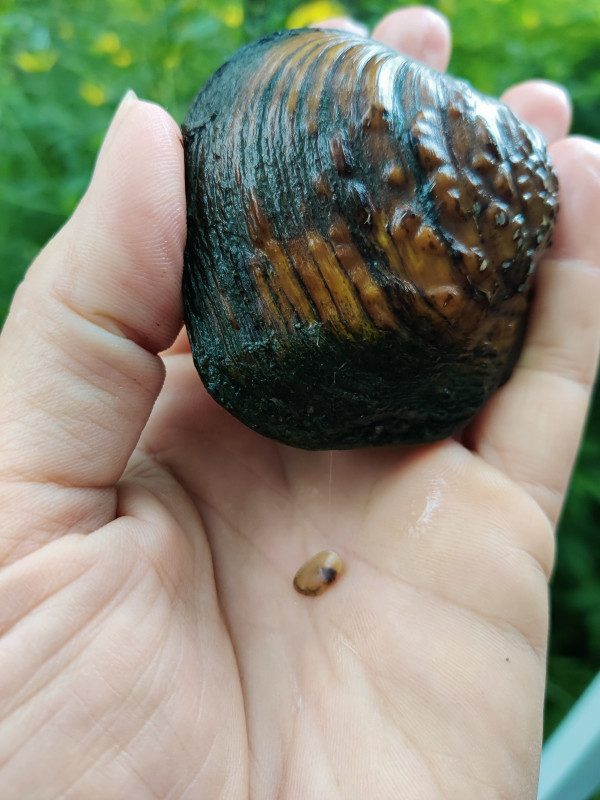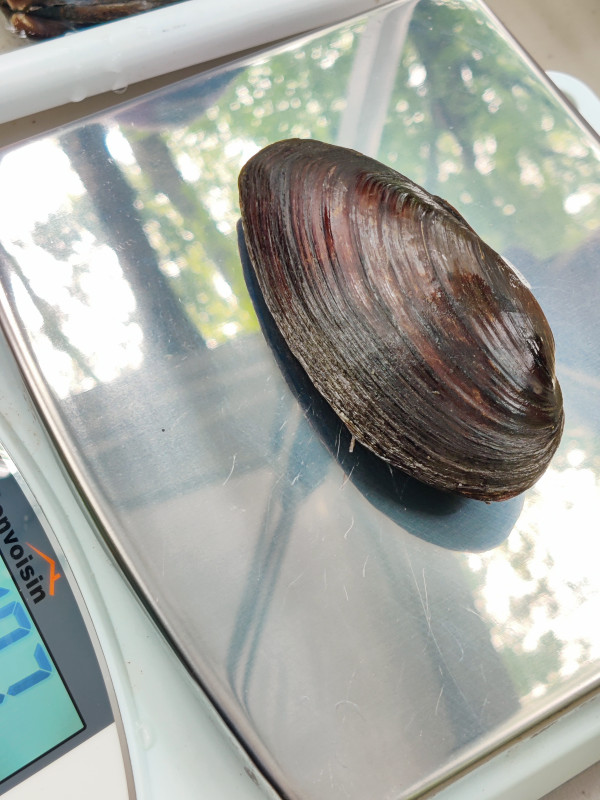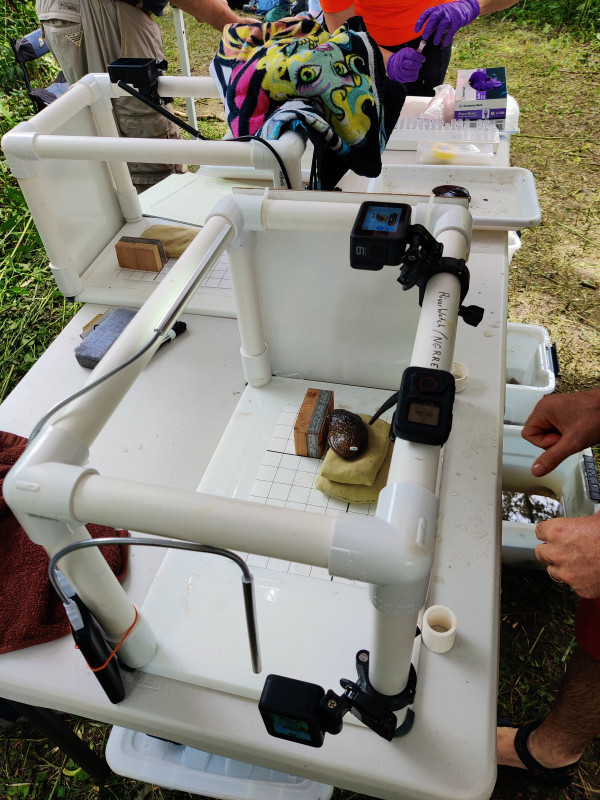Part of Danelle’s work at NGRREC is research. (I know the description following won’t be totally accurate) One of her current research projects is a 10 year study of fresh water mussels. This study was put together with dedicated volunteers passionate about this subject along with professional experts on the subject. I was lucky enough to go with Danelle and work on two sites of this study.
Rather than try to explain the study which I would mess up, I’ll show photos in order of what happened and try to explain each of them.
First, we show up early and use a giant wheel barrow to move supplies to the site we’re working at. (Some sites we can drive really close).
Once the supplies are unloaded, we wait for the volunteers to show up. I may have hauled Danelle in the wagon because I could. Then there is a talk explaining what we’re doing and why its important. Volunteers range from young to old and in between.
Some of the volunteers help measure out the sections that we’ll use to organize our search.
With 10 sections marked out, 3 volunteers were assigned each section and given 30 minutes to capture as many mussels as they can before time is up. This can range from frustrating because you don’t find any to exciting because you found a bunch. I had one of each experience this weekend.
Searching for mussels is a whole body experience. You’ll end up on hands and knees in the water or just sitting on the bottom of the river. There, you’ll run your hands through the soil feeling for mussels. If you’re lucky, your hand will come out of the water looking like this.
There is actually a full grown and a baby in this photo. Once you’re over your excitement of finding one, you put it in a mesh bag and go back to searching again.
Once thirty minutes are up, we all come back to a central location and start what I call the processing machine. Mussels are kept in trays and wet to ensure they continue to live through this process.
Shells are removed from water and temporarily dried allowing 2 tags to be glued to the shell. Then each is weighed and identified.
Identification is fun as the different types have colorful names such as heel splitter, monkey face, and pimple back. The size of each is also measured in length, width, girth. All of this is recorded with the tag number from the shell. But wait, there is more. Each is treated to a stop in the photo studio. Danelle designed and build the photo studio to get photos of each specimen. She uses two Go Pro Hero 9 Black cameras tied to a Bluetooth device to take the photos at the same time.
After the photo, the mussel is then placed back into a bucket to ensure the least discomfort possible. When all 10 sections have been recorded, the mussels get returned to the section they came from and dispersed.
There is a whole lot more to it and all of the science behind the data being collected. If you’re interested in participating, there is always room for more volunteers. You could participate in as many of these steps as you wanted to! Reach out by looking up Danelle Haake on the NGRREC website.
Hogan Haake

